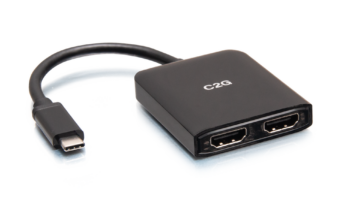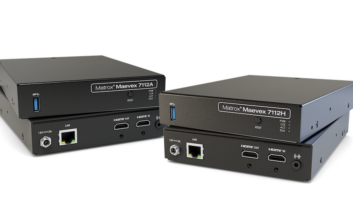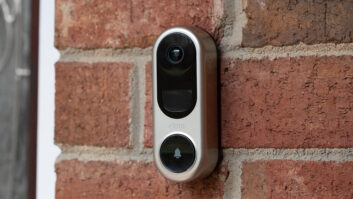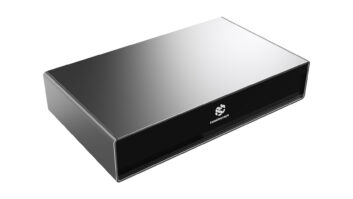In case you’ve been vacationing on a distant planet recently, the binary system on which our computers and CD players operate has begun to revolutionize television and video technologies.
The most obvious evidence of this comes from digital home satellite systems and DVD Video players, which each represent the fastest growing new video technologies ever introduced. This year, DVD players are expected to hit 3 million units, while satellite systems for DirecTv and EchoStar turn in record sales volume annually.
What’s all the excitement about? In short, it’s the best picture and sound quality ever produced by a home electronic device. It also is a means for combining the interactive entertainment benefit of the Internet with the passive viewing experience of the television set.
By far the most ambitious deployment of digital technology into the video world began last fall, when broadcasts in the top 10 U.S. markets transmitted the first digital signals in standard- and high- definition formats.
Although high-definition programming is limited today, the major networks plan aggressive HDTV schedules later in the year. Eventually, ancillary datacasts will be transmitted to help viewers research information about a program without leaving the couch.
Unfortunately, the one fly in the ointment is Hollywood’s insistence that a copy-protection system be devised before such digital video recording devices as DVD recorders or D-VHS VCRs are introduced.
CEMA is working on a solution. It first implemented standard No. 775 for transporting the information between a set-top device and a digital TV. This calls for use of the IEEE-1394 FireWire connection and some extensions to that specification. But those extensions did not address digital copy protection.
CEMA’s Copy Protection Technical Working Group (CPTWG) is developing a standardized system of content protection and conditional access for digital TV programming. Discussions include consumer electronics manufacturers, the MPAA, the National Cable Television Association (NCTA) and CableLabs, a cable engineering body that is assembling a national standard for a digital cable platform called OpenCable.
Five proposals were submitted: 5C; the Open Copy Protection System (OCPS) from Philips; the Extended Conditional Access (XCA) system from both Thomson and Zenith; a system from NDS (the News Corp. subsidiary that developed the smart card security system for DirecTV); and a system from a firm called MRJ.
The MPAA has given an informal OK to the 5C system because it offers four layers of security: bi-directional authentication; the Copy Guard Management System (CGMS); encryption; and renewability, which provides a means for updating the system in the event it is broken.
Most importantly, 5C provides for revocation (remote deactivation) of a device, whether that is a set-top box or a TV set with an internal decoder. The MPAA is said to be insistent that any copy-protection scheme includes a way to track devices and take offending units out of service.
However, the way 5C deals with the device revocation issue poses the greatest problem, according to Philips, Thomson and Zenith.
Some manufacturers see the 5C solution as a threat to consumers and manufacturers because it offers the potential for widespread product deactivations if secret internal “keys” are ever discovered or hacked.
Thomson and Zenith said their XCA system is superior to 5C because it calls for use of an easily exchangeable smart card containing both conditional access and copy protection systems instead of permanent internal chips.
As in the 5C proposal, the Philips system calls for use of an embedded chip, but it would use open, public “keys” that have been used for years and have not been broken. Additionally, these keys would be incorporated only in each chip and not kept in a vault where they might accessed.
Although any chance of a solution being found in 1999 is virtually dead, some manufacturers believe there is a good chance products including IEEE 1394 interfaces and copy protection will arrive sometime next year.
Here’s what the various digital technologies promise:
Digital Television (DTV): This is a form of television broadcasting in which signals are broadcast in digital binary form. In the U.S., the Advanced Television Standards Committee (ATSC) devised a standard embracing 18 different broadcasting and display formats. Depending on resolution, aspect ratio and surround sound, these formats are divided into two general camps: high-definition television (HDTV) and standard-definition television (SDTV).
The 18 video formats, known as Table 3 in the DTV standard, use MPEG-2 video compression and Dolby Digital 5.1-channel compressed surround sound.
The basic picture display formats are known as 480i, 480p, 720p and 1080i. Each number indicates the horizontal lines of resolution (transmitted per screen). The corresponding letter indicates whether it is an interlace or progressive-scan format.
CEMA has said that all receivers must receive and decode all 18 Table 3 formats. However, what the monitor actually displays is determined by the capabilities of each unit. Some receivers may display formats in their “native” or true form while others convert them to another format.
A transport layer packages audio, video and ancillary data and allows their mix to be varied so that broadcasters can offer a wide range of programming services including one channel of high-definition TV, multiple channels of standard-definition programming, multiple channels of surround sound, and interactive data enhancements.
All of the digital data in the transport stream is compressed to 19.39 Mbits per second to fit within the 6MHz of bandwidth allocated to each DTV channel.
High-definition television includes ATSC formats that offer 1,125-, 1,080- and 1,035 lines of interlaced video and 720 and 1,080 lines of progressive video in a 16:9 aspect ratio.
All other formats are known as standard-definition television (SDTV). According to CEMA guidelines, SDTV must display all DTV formats at resolution levels lower than HDTV (typically 480i or 480p) and be able to produce some form of “usable audio.” No aspect ratio is specified.
Progressive-Scan DVD Video: Although first announced as a product planned by Toshiba a year ago, DVD players capable of delivering a progressive-scan output signal have still not reached retail shelves.
Once again, the problem can be traced to copy-protection concerns from movie studios, which cried foul after they discovered that the Macrovision copy-protection format approved for analog outputs on conventional DVD players did not protect progressive-scan signals emitted by the broadband outputs on these special devices.
When available, these DVD players will deliver to many of the new digital TV sets on the market a picture with a resolution of 480 horizontal lines that are scanned progressively one after the other, like images displayed on computer monitors.
All current DVD discs are encoded with progressive-scan images. Conventional DVD players convert these images to interlace format in the decoding process so they can be displayed on mainstream NTSC television displays.
To make use of the progressive scanning feature, a television set must display the ATSC 480p (31.5KHz frequency) scan format and have broadband component video inputs (a.k.a. Y-Pb-Pr).
Hard Disk Recording Devices: Bold predictions of market domination greeted the introduction of hard-disk video recorders late last year. These devices are designed to record television broadcasts in the MPEG 2 digital format to a computer-like hard drive instead of video tape.
Three HDR systems have been announced. Two — from TiVo and Replay Networks — are dependent on dial-up program listings that present a selection of broadcast, cable and satellite TV shows that viewers may want to record. Once recorded to the disk, the programs are assembled on a personal TV channel allowing viewers to tune in their favorite programs at their convenience.
A third system that incorporates a Dish Network satellite receiver, a WebTV terminal and a hard disk recorder, lets viewers pause live television programs to attend to an interruption, such as a telephone call, and then return to view the rest of the program without missing any action. This capability is also a basic component of the TiVo and Replay systems.
Through a special software download and monthly subscription service slated for later in the year, the EchoStar unit will also enable viewers to record up to eight hours of video.
The TiVo recorder, which is currently sold direct to consumers in certain markets by TiVo, will be manufactured and marketed later this year by Philips. DirecTv enters the picture in early 2000, when Philips plans to market a DirecTv satellite receiver with an integrated TiVo recorder.
The platform includes artificial intelligence to register viewing patterns and automatically find and record similar programs that should be of value to viewers. It also allows users to train the system to know their personal preferences for TV shows, genres, actors, directors, etc., and to help it make the most valuable selections.
Viewers can also make their own one-time selections from program listings that are downloaded nightly via a telephone modem connected to the TiVo service. The service carries a $9.95 monthly subscription fee.
So far, TiVo has signed on DirecTv and Philips as distribution partners. Philips has also taken an equity position in the new company.
Rival Replay Networks recently partnered with Panasonic to make and market a similar set-top product.
As in the TiVo and EchoStar WebTV products, the Replay device will allow viewers to pause and record live television programs, and like the TiVo system, it will help viewers collect favorite television programs to create personal TV channels. The primary difference is that the Replay devices offer no intuitive intelligence, and they do not require a subscription fee.













